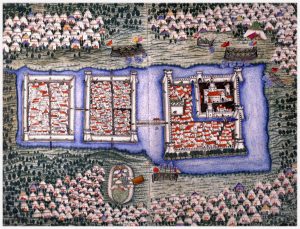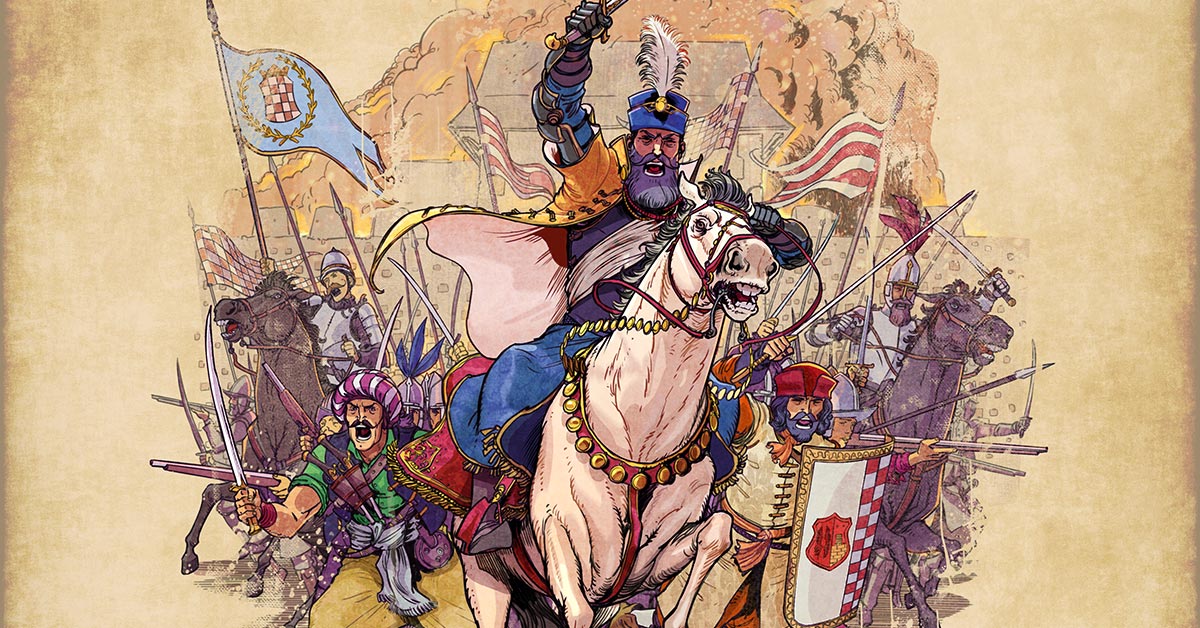
Date
It was in early 2016 when I had first heard about an upcoming commemoration of the 450th anniversary of the Siege of Szigetvár, a battle that saw no more than two and a half thousand soldiers, mainly Croatian and led by Nikola Zrinski, defend against an overwhelming force of some 100,000 Ottoman troops. A wide range of cultural activities was planned to mark the event, attracting high ranking diplomats including the presidents of Croatia, Hungary, and Turkey. It was clearly a significant historical event that was to be commemorated.
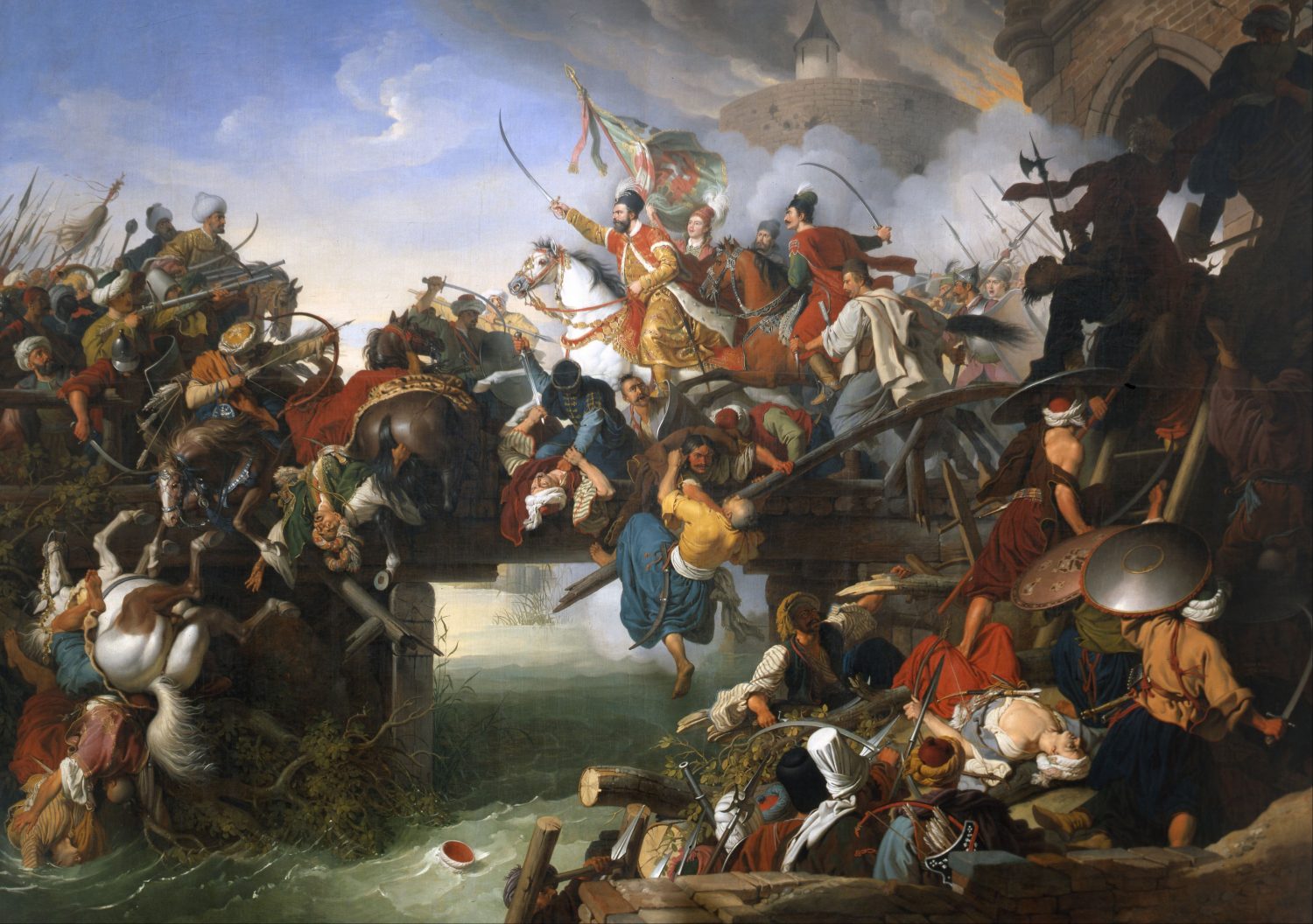
For me it brought memories of learning of the event for the first time as a young kid back in Croatia, and what an important role the hero of Szigetvár, Nikola Zrinski, played. The house that was to be my very first home following my birth was located on a street named after Zrinski, so this character had been destined to be on the fringes of some of my earliest memories. The planned commemoration reignited my interest in this historical event, and I went on to study all the relevant historical records that I could get my hands on.
The Siege of Szigetvár remains etched in the traditions of all the parties involved, the Croats, the Hungarians, as well as the Turks. The Croats lost their leader, a giant amongst men, who after having won a series of battles against the Ottomans met his demise in Szigetvár. The aftermath of the battle saw Hungarians further exposed to Ottoman incursions, having already been left reeling since the defeat at Mohács in 1526, and the loss of their King, Louis II. A series of dynastic squabbles only served to further destabilise the country. For the Turks, the military success came at a great cost. Not only did thousands of their soldiers lose their lives besieging Szigetvár, their great leader, Suleiman, passed away from natural causes the day prior to the culmination of the siege, on September 6, 1566. The victory for the Ottomans can only be described as a pyrrhic one, for they were left without their leader, and having lost almost a third of their forces, they had to abandon their campaign of further expansion into Central Europe and return home. The Vizier had an important matter of succession to address and their goal of taking Vienna was to await another opportunity, some 120 years later.
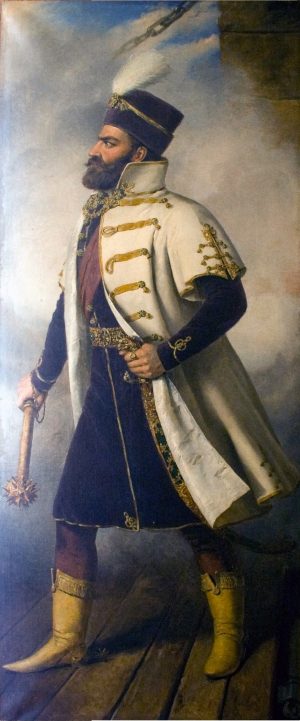
The brave defenders of Szigetvár gave Europe some breathing room and the heroics of Nikola and his men were hailed across the continent. “Leonidas of Modern Europe” was just one of the epithets ascribed to him. The infamous French Cardinal Richelieu described the Siege of Szigetvar as “the battle that saved the civilisation”. Where previously very few Europeans may have heard of Zrinski, much less Szigetvár, the heroic defence offered by Zrinski and his men and the events that followed ensured their sacrifice would indeed be remembered.
Zrinski, however, was more than just the hero of Szigetvár. He was born in 1508 in the town of Zrin, Croatia, to Nikola III Zrinski and Jelena Karlović, who happened to be the sister of the future Croatian Viceroy, Ivan Karlović (himself appearing in this Prologue in the assembly of the Croatian Parliament, inviting the fellow heads of noble families in signing the agreement). Zrinski had already distinguished himself at a young age during the Siege of Vienna in 1529, and following a series of victories against the Ottomans in subsequent years saw his status in the King’s service rise, eventually being rewarded by the King when he was appointed as the Ban (Viceroy) of Croatia in 1542, a position he would hold for some 14 years. His successful campaigns against the Ottoman forces speak of his military ability, as well as his leadership skills.
At the time of the commemoration events in 2016, I had already been writing several comic book series and felt an urge to adapt this historical event into a graphic novel that would pay respect to these brave men. I had previously read a short graphic novel adaptation by one of the greats of the Croatian comic book industry, Ivica Bednjanec, and whilst he did a great job of it, I felt that I could put my own spin to the story and add a more ‘human’ element to it in an attempt to bring some of the historic figures to life. I conducted much research and even engaged a freelance photographer in Hungary to take detailed photos of the remains of Szigetvár, now a historical monument, so that I may use them as a reference.
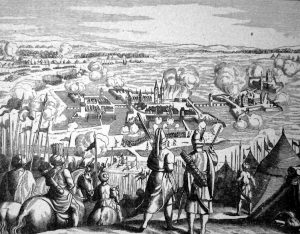
I had been on the lookout for an artist that I felt could do this story justice and came across Jake Bilbao who was producing some impressive work. His style immediately spoke to me and I engaged him to design some of the characters that would feature in the story, including Zrinski. Some of these designs can be seen on the subsequent pages. Jake proved to be a revelation and did a fantastic job on the the characters. His attention to detail was impeccable and this particularly came across during the page layouts once I had provided the script to him for this Prologue. He even designed 3D models of some of the locations to aid in his illustrations, including the church where the Croatian nobles met in 1527, and ensured that he knew who each figure was and where they were to be positioned.
The events leading up to the Siege of Szigetvár can be traced back many years, if not decades. I specifically chose to open the story in the Croatian town of Cetin, where an assembly of the Croatian Parliament consisting of the heads of noble families was held on January 1, 1527. The aftermath of the great battle in 1526 near Mohács in Hungary, where a great many men were lost by the belligerents consisting of Hungarian, Croatian, Bohemian, Polish, and other allied troops fighting a common enemy – the Ottomans, had been long lasting.
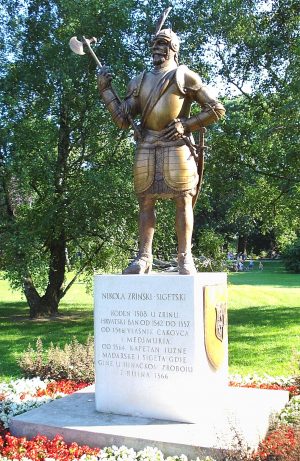
The Hungarian King Louis II had assembled roughly 30,000 men and chose a field near Mohács in Southern Hungary as the ideal location to meet the Ottoman forces, believing the flat ground would favour his famed cavalry. Despite the Ottomans commanding a force double the size of his, he remained confident in the capability of his forces as well as the advantage afforded by the chosen location. So much so that he opted not to wait for reinforcements who had already been en route, including some 5,000 men led by the Croatian Viceroy Krsto Frankopan. The forces led by King Louis II were soundly defeated, with the King also having lost his life by drowning whilst forced to retreat. Hungary was plunged into disarray with various parties pretending to the throne.
As a result, the Croatian nobles, by majority, elected a new king on the historic day of January 1, 1527, Ferdinand I Habsburg, who in return for their allegiance promised that he would help defend Croatia against the Ottomans. This event is well documented, with the original charter, together with the wax seals stamped by the Croatian nobles on the day, still preserved in the Austrian State Archives in Vienna. And thus began what was to be an almost 500 year-long association between Croatia and the Habsburgs of Austria. Those nobles that opposed his election were to throw their weight behind Ivan Zapolya, another pretender to the throne, who himself died in battle in 1540.
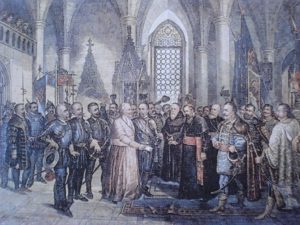
Nikola Zrinski’s father was one of the nobles present on the day at the assembly in Cetin, and whilst there is no evidence that Nikola himself was present, I thought it would be interesting to have him witness the election of the new king, albeit with mixed feelings. In this Prologue, the promises offered by the King’s representatives cast doubt in young Nikola’s mind, who would have been 18 or 19 at the time, something he would possibly remember during the Siege of Szigetvár when it became clear that no help from the King was coming. He was quoted during the siege as saying, “God is high above and the king is far away.”
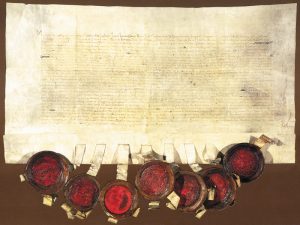
The events leading up to and during the siege were recorded by Zrinski’s chamberlain, Franjo Črnko, who was one of only a handful of survivors. History tells us that he was enslaved following the fall of Szigetvár, but a ransom paid by Zrinski’s son, Juraj Zrinski, saw him released and be given an opportunity to chronicle the events that much of this graphic novel will be based on.
From historical records we also learn of an Ottoman soldier by the name of Mustafa Vilić, who hailed from Banja Luka in Bosnia and who was captured and held prisoner by Zrinski. It was recorded that Zrinski had treated Mustafa well and as a result, Mustafa ended up giving Zrinski an honourable burial following the end of the siege. Not much else is known about this figure, but I thought hard about incorporating him into the story and having him charge out of the fortress alongside Zrinski. My aim was to perhaps show his sheer respect for the determination and zeal displayed by Zrinski and the defenders of Szigetvár, or perhaps to point out that the reasons for war are more complex than simply those of the religious variety.

Something of interest that I had previously read in the Encyclopedia of Wars by Charles Phillips and Alan Axelrod, was that prior to the 17th century for much of the world the reasons for war were explained and justified, at least to those affected and taking part, by religion. Phillips and Axelrod also state that around the middle of the 17th century, “Europeans began to conceive of war as a legitimate means of furthering the interests of individual sovereigns”, and that religious wars account for less than 2% of all people killed in warfare. It’s a statistic that I initially found somewhat surprising, but when one considers the vast complexity of conflicts that have taken place throughout history, it’s certainly not inconceivable that religion was used to justify many of these as well as obfuscate the true intent and motivation behind armed conflicts. Accordingly, I have aimed to present the wars between Europe and the Ottomans as more of a clash of civilisations, driven by complex motives with religion being only one facet.
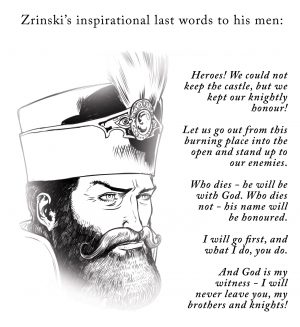
This is a project I am very passionate about and one that I am aiming to complete in the next year or so. I hope that this limited edition Prologue gives you a taste of what is to come and that you will be interested to learn of the events preceding as well as following this last, heroic act by Zrinski and his men. It’s certainly left a lasting impression on me and hence my desire to give it new life so that their deeds don’t go forgotten by subsequent generations.
You can download the FREE prologue of 1566 A.D. in PDF format right here: https://benslabak.com/product/1566ad-prologue-pdf/
